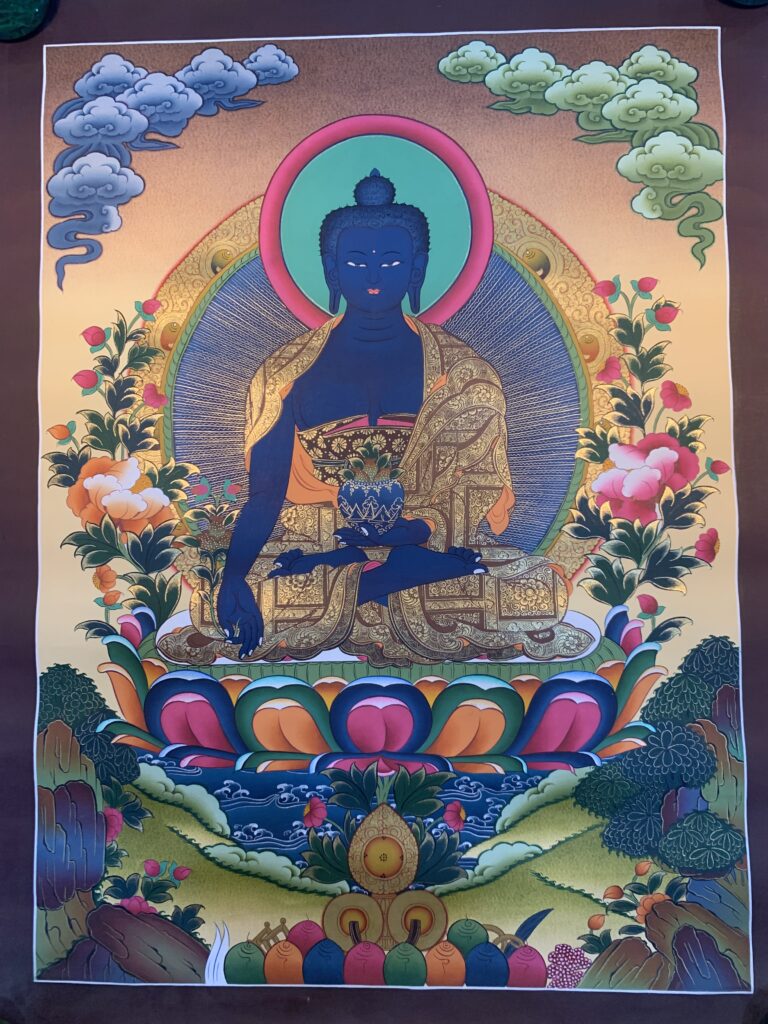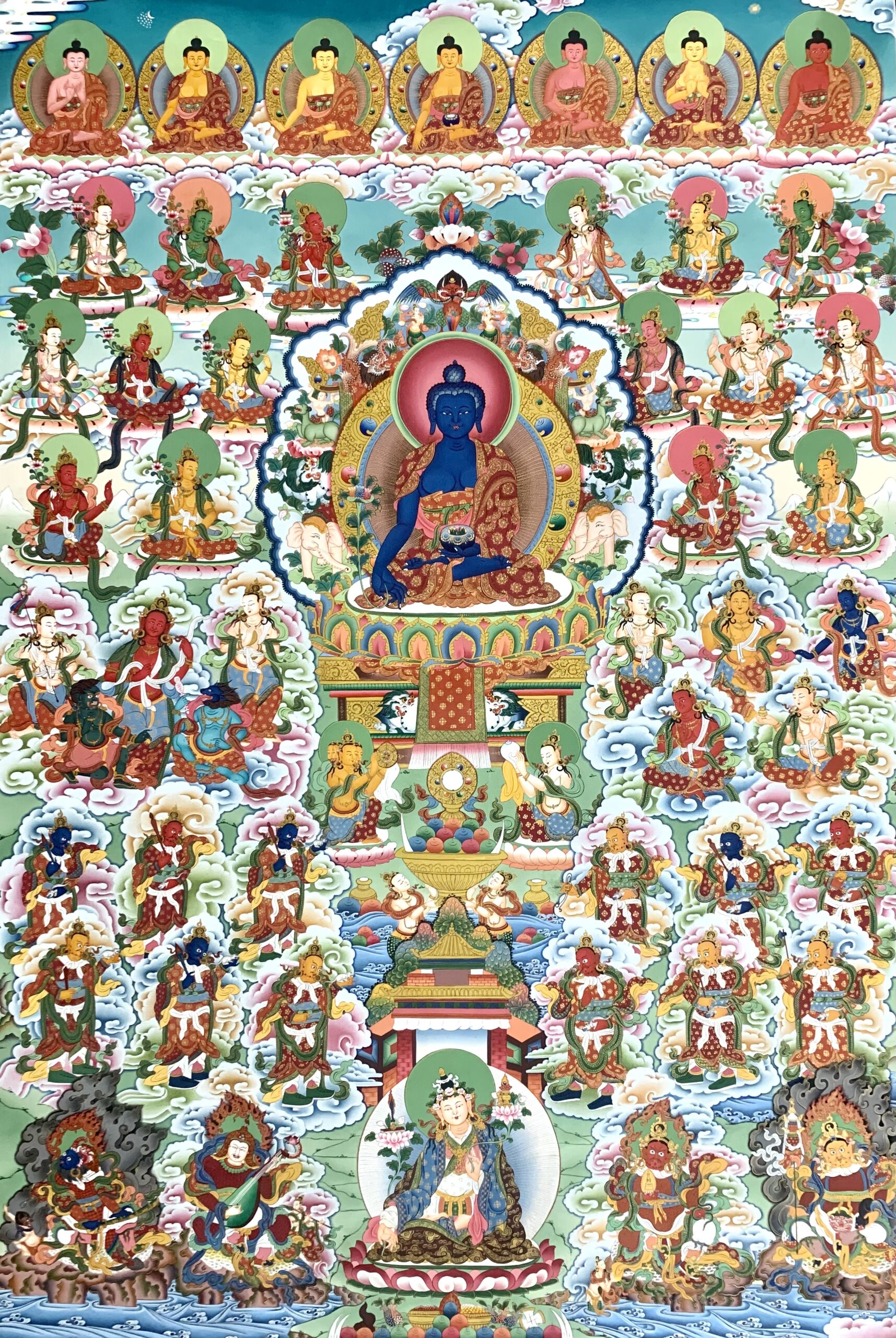Medicine Buddha thangka painting is known as the healing Buddha, Bhaisaiyoguru (Master of Healing), or Medicine Buddha(Bhaisajyaraja) (King of Healing), appeared late in the Mahayana pantheon. Other bodhisattvas and Buddhas were concerned with heling also, but this Buddha’s prime focus was on all aspects of the art; in Tibet he was the patron of medicine and monastic physicians.
Two Sutras were written establishing his cult: the Medicine Buddha(Bhaisayaguru) Sutra, of which a Sanskrit version exsists, and the Saptabuddha Sutra. Both Sutras exist in Chinese and Tibetan translations, but in India no images of Bhaisajyaguru predate the Bhaisajyaguru Sutra’s transmission to China by the fourth century C.E. This suggests a central Asian origin of his cult that later spread to India to be noticed by Santideva of Nalandal University.
Bhaisajyaguru as a Medicine Buddha

When represented in art. Medicine Buddha(Bhaisajyaguru) sits in the lotus position: his body is wither gold or the blue color of lapis lazuli, emanating blue rays, with his left hand on his lap holding a lapis bowl of medicine, and his right hand upheld, holding a medicinal plant. He benefits worshipers particularly in this world. In addition to bestowing great longevity, wealth, and position, he was also able to help kings avert disasters.
The recitation of his mantra (incantation) could confer many benefits. His cult was important in east Asia as missionaries spread his promises of health, longevity, prosperity, and protection of the state. In Japan he was regarded as particularly important in averting national disasters, such as droughts and epidemics, and was even called upon to help turn back the Mongol invasions.
Medicine Buddha can use as a Healing
The cult of Medicine Buddha(Bhaisajyaguru) represents the culmination of a long-term development in the Buddhist tradition. As we have noticed throughout this book, the theme of healing has been central to Buddhissm from the earliest of times. The Buddha is the supreme physician; the Dharma is his means of healing; the Sangha, his attendants. However, the only true health recognized by the Buddha in the early Sutras was the spiritual health of nirvana. His monks were instructed to learn medicine so that they could treat one another’s illnesses, but were forbidden to act as doctors to the laity as this would distract them from their pursuit of true health.
The Vinaya records an incident in which a nun known to be an excellent healer was practicing medicine, and action that prompted the Buddha to forbid making one’s livelihood in this manner. Nevertheless, the Vinaya itself, in its discussion of allowable medicines, acted somewhat as a materia medica that monks memorized and took with them as they spread Buddhism to lands where medicine was less advanced than in India. Evidence abounds revealing that monks of all schools have used their medical knowledge as an aid in spreading the teaching, but it was not until the Mahayana texts that they were actively encouraged to do so.
Because of the Mahayana belief that nirvana is immanent in samsara, the boundary line between physical and spiritual health was blurred. Bodhisattvas, as physicians, were instructed to treat both corporeal and spiritual aspects of disease as part of the perfection of giving, under the rationale that disease can be an obstacle to spiritual progress.
curriculum of the monastic universities also using as a healing.
By the beginning of the Common Era, monastic centers not only provided medical help for sick monastics and lay devotees, but also taught medicine along with other arts and sciences. In the seventh century C.E. the Chinese pilgrim Hsuan Tsang noticed that medicine was included in the curriculum of the monastic universities, and by the fourteenth century the Tibetan historian Buton noted its transmission to Tibetan monasteries, where it was flourishing under Bhaisajyaguru’s patronage.
So Medicine Buddha is can use as hilling buddha to get remove from negative energy.

